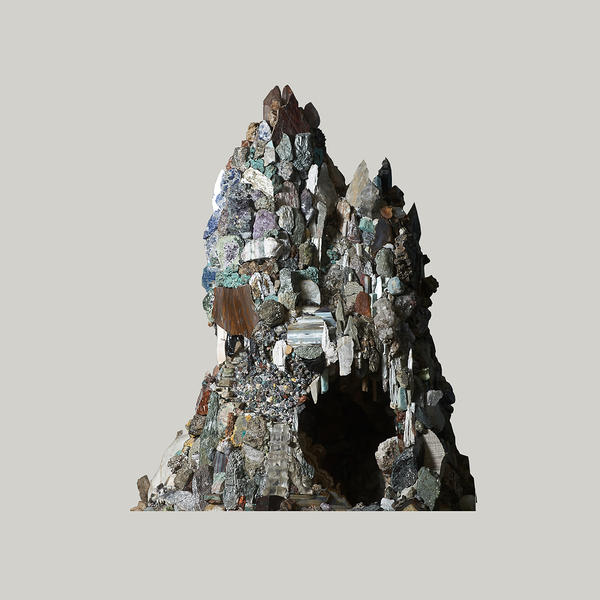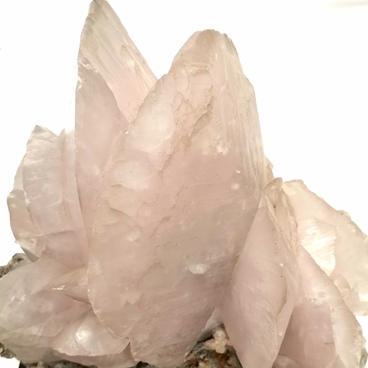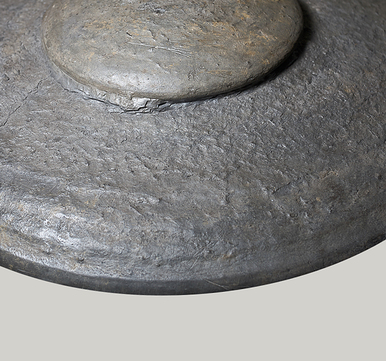The work of decorative and applied art is made in the form of a pile, made of gemstones and minerals. The composition is based on minerals of the quartz group: onyx, cornelian, chalcedony. At the foot of the rock, there is an entrance to the cave — rock crystal brushes, imitating stalactites, sparkle in the depth of the cave. A serpentine staircase, the steps of which are made of polished agate, has cuts, rounds the grotto and leads to the top, to a small hut made of fireproof clay.
Each ledge of the pile is decorated with elaborately selected pieces of polished malachite, amazonite and obsidian. There are tourmalines of different colors — from black and thick blue to pink, amethysts of perfect shape and rare pyrite Druzes. The walls of the cave flash with bright sparks thanks to the inclusion of mica chips. The rotating stand allows the viewer to see the work from all sides.
The exhibit has not only aesthetic, but also historical value, as it is a creative development of the long-standing relief art, foundered by Ural stonecutters. A grotto-fountain, made in 1786 of more than 200 species of untreated colored stones from the Urals and Siberia, is considered to be the first work of this kind. The stone pyramid was ordered as a gift to Empress Catherine II. Now it adorns the collection of the State Hermitage Museum.
Initially, the piles were collections of rare minerals, precious and semi-precious stones of non-standard color or form of crystallization. As the composition improved and its artistic value grew, the products became popular interior decorations in dwellings of the high society and, as academician A.E. Fersman aptly phrased it, they began to reflect ‘the fashion for entertainment science.’
At an exhibition held in 1916, a composition created by the artist and hereditary stonecutter Alexei Denisov-Uralsky attracted everyone’s attention. That success was noted by newspaper that enthusiastically wrote “about a special way of displaying stones.” The master learned the art of combining rock samples from his father: the whole Denisovs family was engaged in the production of piles.
In the turbulent whirlwind of events of the 20th century, the long-standing Ural tradition was almost forgotten, the secrets of the intricate craft were no longer inherited. Yet they were not lost completely, which is perfectly demonstrated by the museum artifact. Today this art is being revived. While the nature itself still remains the co-author and source of inspiration for the modern masters, new technologies are of great help in the processing of stone.
Each ledge of the pile is decorated with elaborately selected pieces of polished malachite, amazonite and obsidian. There are tourmalines of different colors — from black and thick blue to pink, amethysts of perfect shape and rare pyrite Druzes. The walls of the cave flash with bright sparks thanks to the inclusion of mica chips. The rotating stand allows the viewer to see the work from all sides.
The exhibit has not only aesthetic, but also historical value, as it is a creative development of the long-standing relief art, foundered by Ural stonecutters. A grotto-fountain, made in 1786 of more than 200 species of untreated colored stones from the Urals and Siberia, is considered to be the first work of this kind. The stone pyramid was ordered as a gift to Empress Catherine II. Now it adorns the collection of the State Hermitage Museum.
Initially, the piles were collections of rare minerals, precious and semi-precious stones of non-standard color or form of crystallization. As the composition improved and its artistic value grew, the products became popular interior decorations in dwellings of the high society and, as academician A.E. Fersman aptly phrased it, they began to reflect ‘the fashion for entertainment science.’
At an exhibition held in 1916, a composition created by the artist and hereditary stonecutter Alexei Denisov-Uralsky attracted everyone’s attention. That success was noted by newspaper that enthusiastically wrote “about a special way of displaying stones.” The master learned the art of combining rock samples from his father: the whole Denisovs family was engaged in the production of piles.
In the turbulent whirlwind of events of the 20th century, the long-standing Ural tradition was almost forgotten, the secrets of the intricate craft were no longer inherited. Yet they were not lost completely, which is perfectly demonstrated by the museum artifact. Today this art is being revived. While the nature itself still remains the co-author and source of inspiration for the modern masters, new technologies are of great help in the processing of stone.



